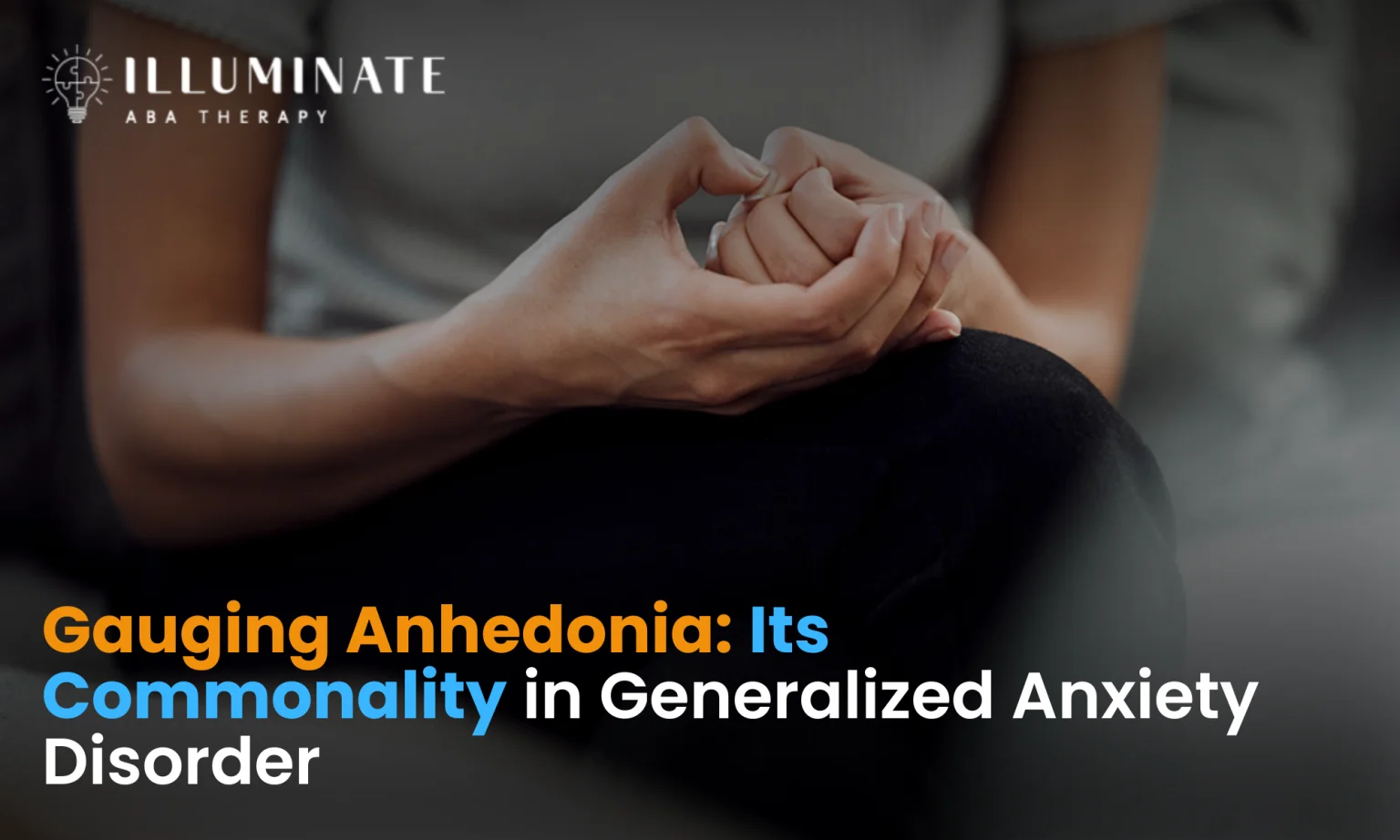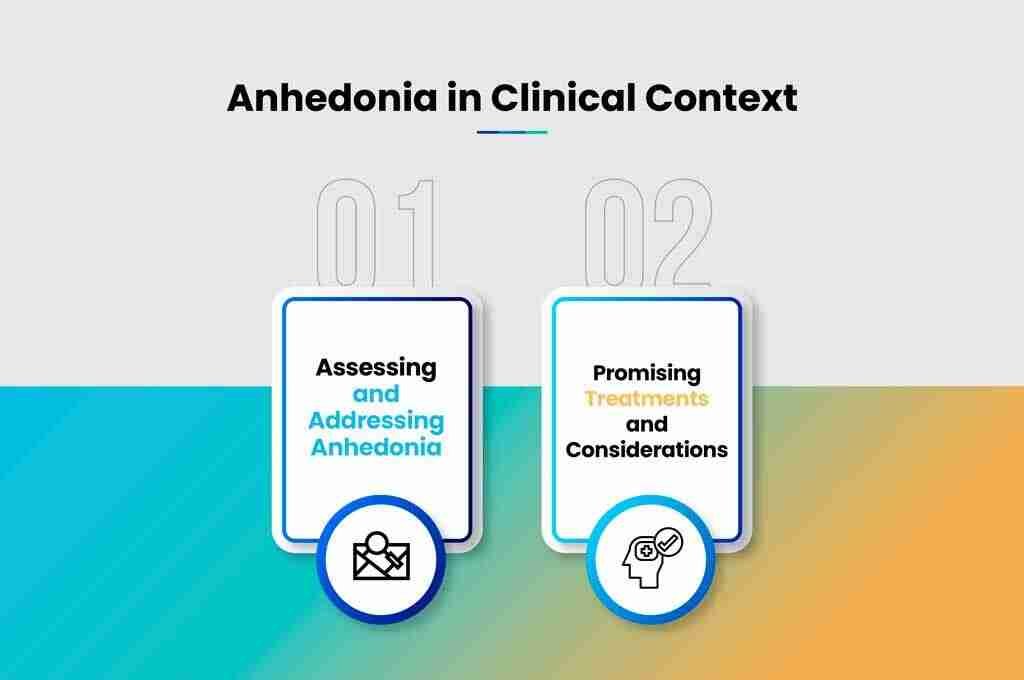Gauging Anhedonia: Its Commonality in Generalized Anxiety Disorder
ABA TherapyJuly 17, 2025

Understanding Anhedonia in Anxiety
Anxiety can often feel like a never-ending rollercoaster, and right there in the mix is anhedonia—a fancy term for losing interest or joy in stuff you once loved. It’s much more than just feeling down. Figuring out how it fits with Generalized Anxiety Disorder (GAD) is key for tackling these issues head-on.
What Is Anhedonia?
Okay, let’s break it down. Anhedonia is when things that used to bring a smile to your face now feel meh. It’s not just about being sad—it’s a big ol’ gray cloud that can squash your enthusiasm for life's simple pleasures. People dealing with GAD often feel this way a lot.
When anhedonia shows up in folks with anxiety disorders, their daily life can take a hit. It leads to dragging feet, skipping out on hangouts, and losing enjoyment in things that should be fun. Catching anhedonia early on is critical to truly understanding anxiety disorders and managing them effectively.
How Does it Relate to Generalized Anxiety Disorder?
Here’s the scoop: Anhedonia might be the bridge between anxiety and depression. Some research suggests feeling anxious might kick off anhedonia, which could eventually usher in depression.
For those grappling with GAD, anhedonia seems to steal the spotlight in the symptom department. It’s more influential than others like a lousy quality of life or overthinking everything. This suggests anhedonia plays a big role in making everything seem more intense and wide-ranging.
Plus, studies find that a good chunk of folks report feeling moderate to severe anxiety, with anhedonia tagging along like an unwanted sidekick.
Getting a handle on how anhedonia and GAD dance together is crucial for crafting treatments that break down anxiety's complicated web. Putting anhedonia in the spotlight is a smart move toward boosting life’s joy and overall well-being.
Symptoms of Anhedonia
Anhedonia in Mental Health Challenges
Anhedonia ain't just about feelin' blue. It pops up in lots of mental struggles like depression, schizophrenia, and bipolar disorder. Even folks dealing with Parkinson’s, diabetes, or heart problems might find pleasure slipping away. It's not just a one-size-fits-all kinda issue, and that's why pinpointing its presence in these conditions is a must.
Snaith-Hamilton Pleasure Scale: The Anhedonia Meter
Mental Health Challenge
Anhedonia Level (Snaith-Hamilton Pleasure Scale)
Major Downer Days
Sky High
Schizophrenia
Medium
Addiction Problems
All Over the Place
Parkinson's Shuffle
Mild-ish to Moderate
Chronic Pain Blues
Middle Range
Anhedonia's wild ride through these different mental health conditions is mapped out using the Snaith-Hamilton Pleasure Scale, showing everyone's got their unique mix of it.
Hit on Relationships
This party crasher called anhedonia makes twisting one's heartstrings hard. Those who face this struggle might find it tricky to spark joy or show a warm touch—relationships can get icy. Whether it's buddies or bae, feeling or showing love gets tough.
The struggle isn't just in the bedroom. Life's little pleasures can feel muted too, making simple joys with loved ones less so. But don’t lose hope—some joy might still sneak in, though it might not scream as loud as it used to. Getting a grip on how anhedonia weaves into relationships helps in crafting ways to handle it while working on mental health.
Neurobiological Factors of Anhedonia
Anhedonia, a pesky symptom showing up in various mental health disorders, hangs out with friends like generalized anxiety disorder. It's heavily tangled up with changes in brain activity, and dopamine is the big player here. This mood-regulating chemical, which throws a party when feeling pleasure, is key to cracking the anhedonia code.
Dopamine and Brain Activity
Stuff we’ve sniffed out says anhedonia might be the brain's way of flipping a switch on dopamine. When folks deal with anhedonia, their brains might act like there's a dopamine carnival going on, especially in the prefrontal cortex. This over-the-top activity can mess up the paths we use to chase joy, making it tough to enjoy things that are usually fun.
Figuring out what’s cooking in the brain with anhedonia is a big deal for cooking up treatments that tackle dopamine gone haywire. Experts are on the trail of understanding the dance between dopamine levels and what’s happening in our noggolopr daily.
Challenges in Treatment Approaches
Wrestling anhedonia into submission is tricky, because it doesn’t always wave a white flag to usual treatments. There’s no magic potion yet, showing just how complicated this symptom gets. Treatment usually starts with spotting what’s fueling the fire and then calming those flames to ease the gnawing lack of enjoyment.
For those riding the anhedonia roller coaster, doctors sometimes bring in the heavy artillery like SSRIs, hoping to hit the mood regulation target and potentially offer some peace. Plus, new kids on the block like ketamine therapy are showing up on radar as possible game changers for folks non-responsive to old-school methods.
Trying to sort out anhedonia’s main act means getting up close and personal with why it happens, and figuring out tailor-made solutions for individuals. As smart folks dig deeper into dopamine's role, brain vibes, and how they all fit with anhedonia, new paths for treatment could open up, offering a glimmer of hope for those dealing with this tough nut to crack.
Anhedonia in Clinical Context

Let's talk about anhedonia, which is like that annoying buzzkill stopping you from enjoying life. It's a real thing, especially for those with generalized anxiety disorder. Nobody likes a party pooper, and anhedonia does just that by sucking the joy out of activities that used to be fun. Its presence is quite the game-changer in mental health, showing up hand-in-hand with anxiety and depression.
Assessing and Addressing Anhedonia
Understanding anhedonia feels a bit like solving a puzzle; everyone’s piece is a little different. There's a mash-up of mental health issues where anhedonia likes to hang out. Studies, like this one floating around on PubMed, reveal how people with major depressive disorder, schizophrenia, substance use issues, Parkinson's, and chronic pain each experience it differently. This means there's no one-size-fits-all; we need to really get to know how anhedonia shows up for each person.
In the clinic, you'll find handy tools like the Snaith-Hamilton Pleasure Scale. It's not just jargon; it's a legit thing that measures how much pleasure’s gone MIA. Checking in with this scale over time helps track how things are looking, kind of like marking off days on a calendar to see progress. Clinicians and big-brain researchers use this info to hack out personalized plans tailored to handle the funk anhedonia slings at people with generalized anxiety disorder.
Promising Treatments and Considerations
When medications are in the mix, it’s not always a slam dunk. Take antidepressants like SSRIs, for instance. They try to help with anhedonia, but people aren’t always wowed by the results. So, what next when these don't do the trick? Enter ketamine—a little unconventional but turning heads in the mental health world.
Ketamine isn't just for catnip parties anymore; its quick action against the blues is getting noticed, especially for those dealing with bipolar depression who don’t vibe with SSRIs or talk therapy. What ketamine brings to the table shows the importance of thinking outside the box. It encourages a treatment strategy that respects each person's unique mental wiring—because let’s face it, everyone’s brain sings a different tune.
Clinicians keeping a pulse on the latest research and treatment options can really up their game in tackling anhedonia within anxiety disorders. By mixing science and understanding of how anhedonia crashes the anxiety party, they can whip up better care plans for folks trying to get their groove back.
Get Insights About: Is Sensory Processing Disorder a True Disability?
